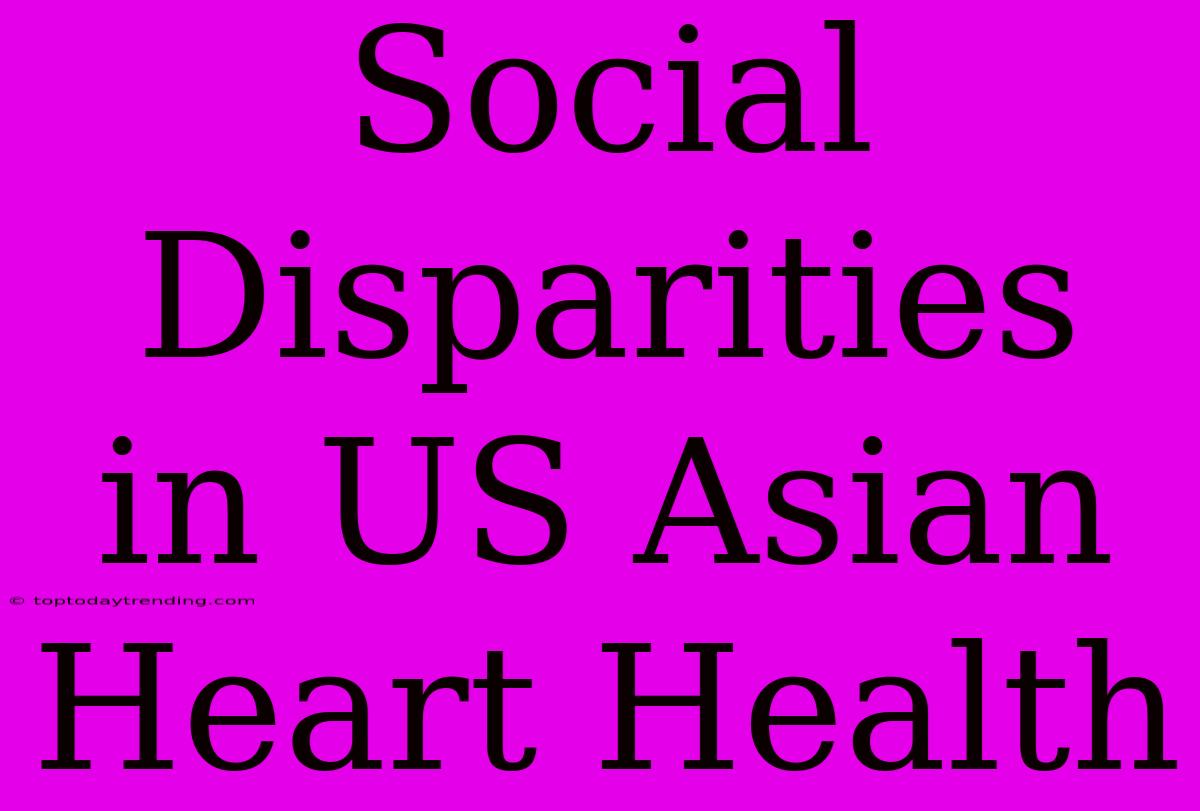Social Disparities in US Asian Heart Health: Unmasking the Silent Crisis
The United States boasts a diverse population, and within this tapestry of cultures, Asian Americans stand as a significant and growing demographic. However, beneath the surface of this vibrant community lies a troubling reality: Asian Americans experience disproportionately higher rates of heart disease compared to other racial groups. This alarming trend underscores the urgent need to address social disparities impacting the heart health of this community.
The Shocking Statistics
While Asian Americans are often perceived as a "model minority" with favorable health outcomes, the reality is far more nuanced. Studies reveal that Asian Americans:
- Have higher rates of heart disease than white Americans.
- Experience higher rates of stroke.
- Are more likely to be diagnosed with heart disease at a later stage, leading to poorer outcomes.
This disparity cannot be attributed solely to genetic predisposition. Social determinants of health play a pivotal role in shaping the health experiences of Asian Americans, creating a silent crisis.
Unpacking the Root Causes
1. Language Barriers and Access to Care:
- Many Asian Americans face language barriers that hinder their ability to communicate with healthcare providers, leading to misdiagnosis, delayed treatment, and inadequate health education.
- Cultural differences and limited access to culturally sensitive healthcare services further exacerbate these challenges.
2. Discrimination and Implicit Bias:
- Implicit biases held by healthcare providers can result in under-diagnosis and misdiagnosis, ultimately impacting the quality of care received by Asian Americans.
- Systemic racism and cultural stereotypes can also influence access to healthcare resources and economic opportunities, contributing to health disparities.
3. Limited Health Insurance and Financial Strain:
- Lower socioeconomic status within certain Asian American sub-groups can limit access to health insurance and adequate healthcare.
- The high cost of healthcare and limited access to affordable insurance often force individuals to prioritize other essential needs over preventative care.
4. Cultural Factors and Dietary Habits:
- Certain cultural dietary practices, while contributing to a sense of identity, can increase the risk of heart disease.
- For example, diets high in sodium and saturated fats, common in some Asian cuisines, can contribute to hypertension and high cholesterol.
5. Stress and Social Isolation:
- The pressures of acculturation, language barriers, and social isolation can contribute to heightened stress levels, which can negatively impact heart health.
- This can be especially prevalent among immigrant communities facing language barriers, cultural differences, and social isolation.
Towards a Solution
Addressing social disparities in Asian American heart health requires a multi-pronged approach that tackles the root causes:
- Promote cultural competency in healthcare: Investing in training programs for healthcare providers to address cultural differences and improve communication skills is essential.
- Expand access to language services: Providing interpretation services and culturally sensitive healthcare materials can improve communication and access to care.
- Eliminate discriminatory practices: Raising awareness about implicit bias and implementing anti-discrimination policies within healthcare institutions can ensure equitable treatment for all.
- Address socioeconomic inequalities: Expanding access to affordable health insurance, addressing wage disparities, and creating opportunities for economic empowerment can improve access to preventative care and overall well-being.
- Promote culturally tailored interventions: Developing community-based programs that address specific cultural and dietary factors, such as nutrition education and physical activity programs tailored to Asian American communities, can promote healthy lifestyles.
By recognizing the social determinants of health and implementing comprehensive solutions, we can bridge the gap in heart health disparities and ensure a healthier future for all Asian Americans.

